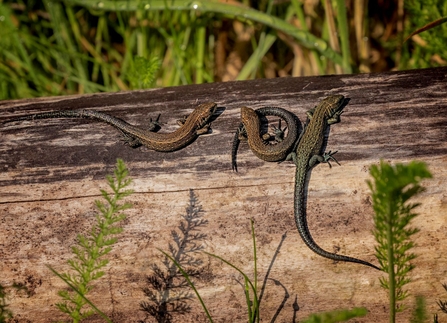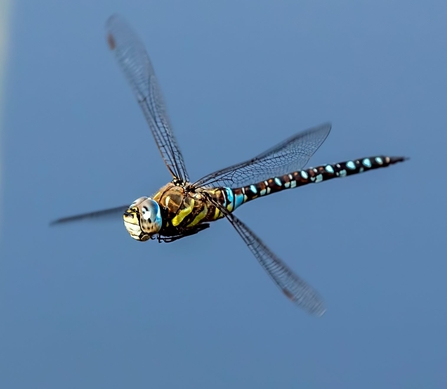Starting with our common lizards, they can often be seen catching the sun on logs and on the boardwalks leading to our hides. Around the same sunny spots, it is worth looking for grasshoppers as well. Just look at the photos we are getting of common lizards on the reserve.
Lizards, dragonflies and butterflies enjoying the summer
common lizard by Jim Palfrey

common lizard by Jim Palfrey
common lizard by Mike Andrews
This summer has been particularly good for butterflies with both painted lady and red admirals showing in high numbers around the reserve. Our last butterfly transect (just a few days ago) had the following other butterflies recorded: small heath, small copper, common blue, speckled wood, comma, peacock, small white and green-veined white so plenty of butterflies to look out for at the moment around the lakes.
painted lady butterfly by Mike Andrews
painted lady with wings closed by Mike Andrews
red admiral by Mike Andrews
Comma butterfly by Mike Andrews
Moving on to dragonflies – we have now moved into the late summer / early autumn time for these species with migrant hawkers being particularly good to watch hovering in front of our hides. Try taking a closer look, through binoculars and you will see the blue marking on this dragonfly. Others to look out for include ruddy darter and common darter – these are often seen catching the sun on fence posts by our trails.

migrant hawker by Jim Palrey
ruddy darter by Mike Andrews
The main hint of autumn comes from watching the birds on the lakes. Swifts have now left us and the first wigeon of autumn has been seen on the slough. Water levels are quite low on most of our lakes and this is helping attract a few waders on the slough and around the islands on the eastern lakes. Lapwing, common sandpiper and green sandpiper are the main ones you might see but it is always worth a check as you never know what might pass through at this time of year. The low water levels are also attracting grey herons, little egrets and the occasional great white egret.
As we move into autumn, more and more ducks will arrive back on the lakes to feed on the weed that has built up over the summer. Long reach from Bess’s hide and Plover lake from Derek’s hide looks particularly good for attracting ducks.
Even our moths are beginning to move into the autumn species with the first frosted orange and sallows appearing. Next moth viewing event is on Saturday 7th September at 1pm.
The transition between summer and autumn is often an interesting time on the reserve.

